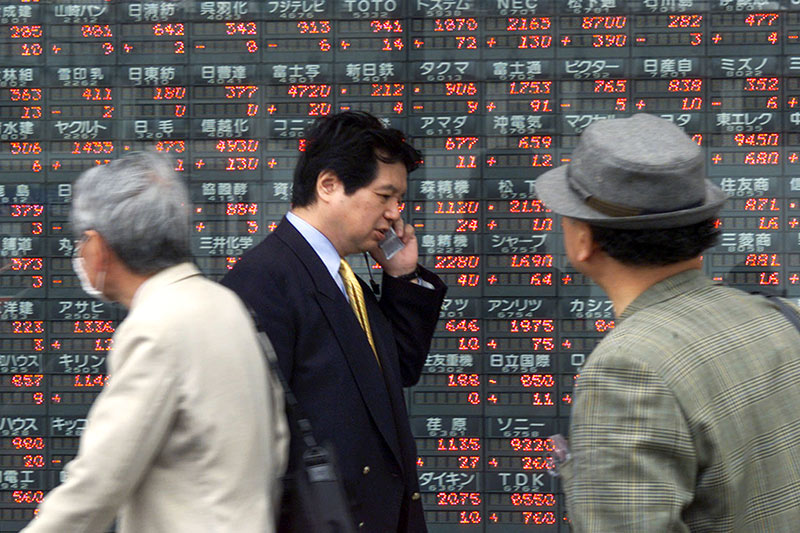Investing.com - Asian shares slumped on Thursday in a follow-on form U.S. markets and downbeat regional data with Tokyo, Sydney and Shanghai all taking hits.
The Nikkei 225 slumped 4.17%, while the S&P/ASX 200 dropped 1.78%.
In Japan, the CGPI (corporate goods price index) is expected to show a fall of 3.5% year-on-year in December. As well, core machinery orders for November year-on-year likely fell 7.9%. In Australia, comes jobs data including employment change with a drop of 12,500 jobs seen, and the unemployment rate expected up to 5.9% from 5.8%.
In China, The yuan fell Thursday despite a stronger fixing by the People's Bank of China. The yuan last traded 0.21% weaker at 6.5891 against the U.S. dollar compared with Wednesday's official close of 6.5750 and 0.23% weaker than the local-time close of 6.5743. The PBOC set the yuan fixing at 6.5616 compared with Wednesday's 6.5630.
Stock prices fell as reports said investors using margin trading to boost leverage sold. The Shanghai Composite Index was last down 1.41% to 2,907.94 - the lowest since heavy selling in late August. It had earlier fallen 2.6% to 2,867.55. Hong Kong's Hang Seng Index was last down 1.58% to 19,619.55.
U.S. stocks fell sharply on Wednesday staging a dramatic reversal late in the session to extend one of the worst starts to a year for the major indices in nearly a quarter-century.
The Dow Jones Industrial Average fell 364.81 or 2.21% to 16,151.41, dropping to nearly its lowest level since early-October, while the NASDAQ Composite index fell 159.85 or 3.41% to 4,526.07, as heavy losses in Amazon.com Inc (O:O:AMZN) and Netflix Inc (O:O:NFLX) weighed. Major losses in the pharmaceutical industry also dragged down markets in general, as the NASDAQ IBB Biotech ETF posted its eighth loss in the last 10 sessions, falling to its lowest level since late-August.
The massive sell-off in U.S. equities mirrored the reversal on energy markets, as oil turned negative on Wednesday morning, after a bearish supply report indicated that U.S. crude inventories rose slightly last week. Earlier on Wednesday, crude prices shot up by as much as 3.5% after the American Petroleum Institute reported a draw of nearly 4.0 million barrels in crude stockpiles last week.
The S&P 500 Composite index, meanwhile, lost 48.40 or 2.50% to 1,890.28, as all 10 sectors closed in the red. Stocks in the Health Care, Consumer Discretionary and Technology industries lagged, each falling by more than 2.5% on the session. The S&P 500 dipped below the 1,900 level for the first time since October. The Dow and the S&P 500 are each down more than 7% in 2016.
